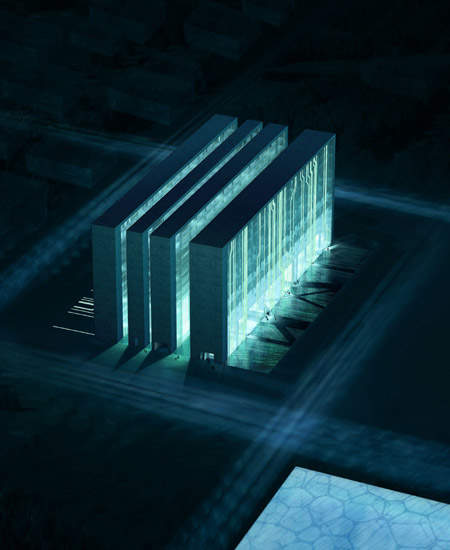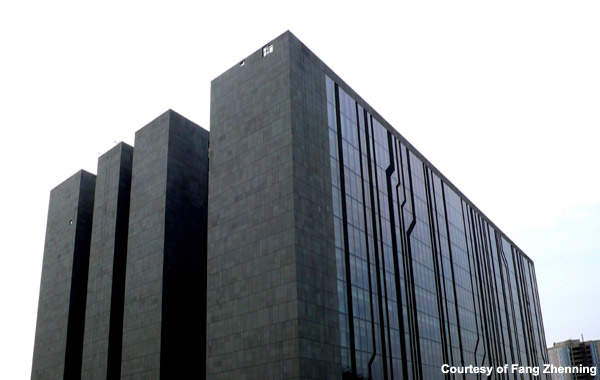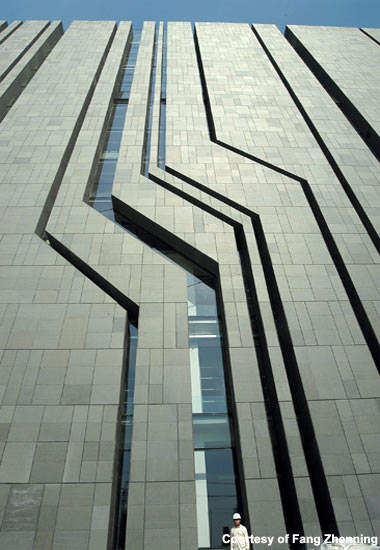It might seem unusual to create a façade that graphically represents digital technology, but with the Digital Beijing Building, the Beijing-based firm Studio Pei-Zhu has done so in several ways.
In this 57m-high structure, which will provide communication and information services during the 2008 Beijing Olympics, the northern and southern sides represent barcodes. Meanwhile, the western and eastern façades replicate the look of an integrated circuit board. When vertical grooves in those facades take a diagonal jog before straightening out again, they resemble the routing of wires on a circuit board.
DIGITAL BEIJING DESIGN COMPETITION
To develop the building concept and win a design competition in which seven other internationally renowned firms participated, start-up design firm Studio Pei-Zhu considered the role of architecture in the information age. The firm comments that the Digital Beijing Building embraces the digital era architecturally and recreates microscopic digital patterns on a monumental scale.
Beijing is surging ahead with ambitious and widespread architectural innovations, creating a futuristic-looking environment, particularly with buildings intended for the Olympics. In 2001, the Beijing municipal government also promised that the Olympics (often referred to as the Digital Olympics) would have the greatest technological offerings of any Olympics in history. But the city’s electronic ambitions extend beyond the Games.
If all goes according to the ‘electronic Beijing’ plan, the government should increasingly be able to handle matters online, thereby becoming more efficient. This modernisation should help advance Beijing’s economic and social development, according to the plan. The city is expected to have complete information networks by 2010.
THE OLYMPIC GAMES AND BEYOND
By then, when the Games have ended, the Digital Beijing Building will accommodate a virtual museum and an exhibition centre for manufacturers of digital products.
But during the Olympics, the building will provide communication and information services, as well as being the technical support centre. The building will receive feeds of live images from spectator stands at all venues. During the Games, the municipal government will also use the building’s technological resources to store data and manage information.
The first project built in the Olympic Central Zone, the Digital Beijing Building is just northwest of the Beijing National Aquatics Centre (also known as the Watercube) and the Beijing National Stadium (also called the Bird’s Nest for its architecture), two other notable buildings constructed for the Games.
DIGITAL BEIJING CONSTRUCTION
At the Digital Beijing Building, four reinforced concrete and steel frame blocks line up like dominoes and rise 11 storeys, with two additional levels underground.
The four blocks interconnect in a large central area, but from some exterior vantage points, the blocks look disconnected. That is, it appears as though three voids separate four solid entities. In alternating between void and solid, the building creates the effect of a barcode.
Exterior materials include curtain walls of precast concrete panels and glass, as well as metallic grids covering open shafts between the four blocks.
Touting the building’s green features, the firm maintains that the LED lighting system can significantly reduce electricity usage for lighting and that the building collects rainwater.






